Genus Chlosyne Rank Species | ||
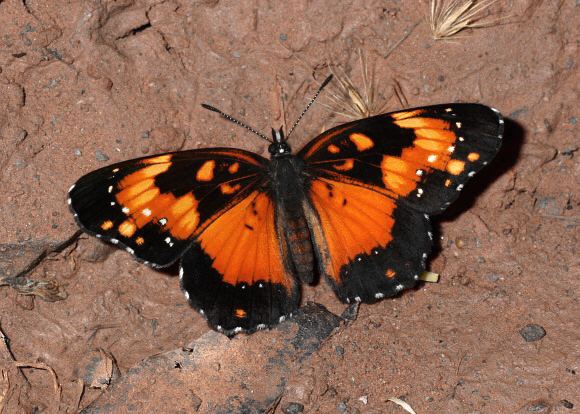 | ||
Similar Chlosyne, Phyciodes phaon, Chlosyne janais, Phyciodes, Asterocampa | ||
Bordered patch chlosyne lacinia laying eggs on sunflower leaf
The bordered patch (Chlosyne lacinia) is a North and South American butterfly in the family Nymphalidae. It is sometimes also called the sunflower patch.
Contents
- Bordered patch chlosyne lacinia laying eggs on sunflower leaf
- Description
- Similar species
- Habitat
- Flight
- Life cycle
- Host plants
- References
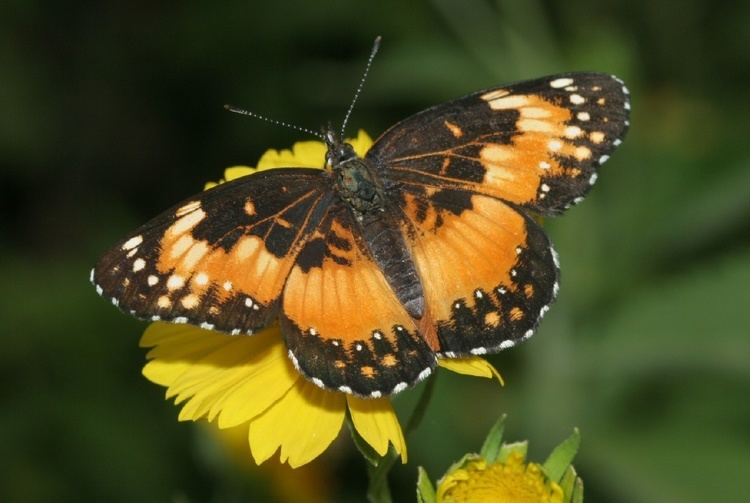
Description

The bordered patch is an extremely variable butterfly. The upper side of the wings is mainly black with the fore wing having rows of white and/or yellow-orange spots of varying sizes. There is usually one whitish spot in the fore wing cell. The hind wing has many color variations. Those variations can be: almost completely black to having some red postmedian spots to having a few rows of white postmedian spots to having an all red-orange discal area to having a yellow-orange postmedian band of varying width. The underside of the wings is just as variable as the upper side. It varies from having a few rows of white and red spots to having a yellow-white hind wing median band of varying width to the underside being mostly golden-yellow with large yellow-orange spots and a thick golden-yellow median band. All of these variations have a red spot near the hind wing tornus. Its wingspan ranges from 1¼ to 1⅞ inches.
Similar species
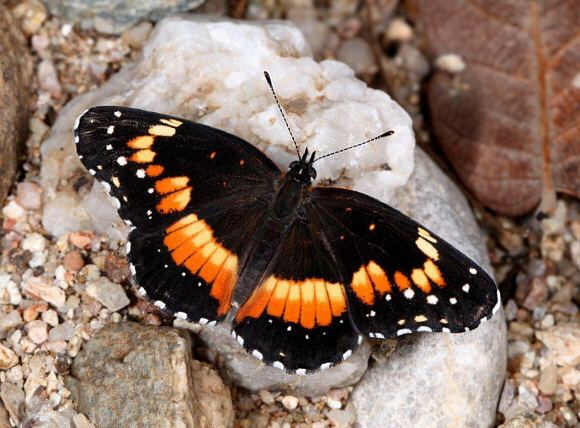
Similar species in the bordered patch's range include the crimson patch (Chlosyne janais), the Rosita patch (Chlosyne rosita), and the red-spotted patch (Chlosyne marina).
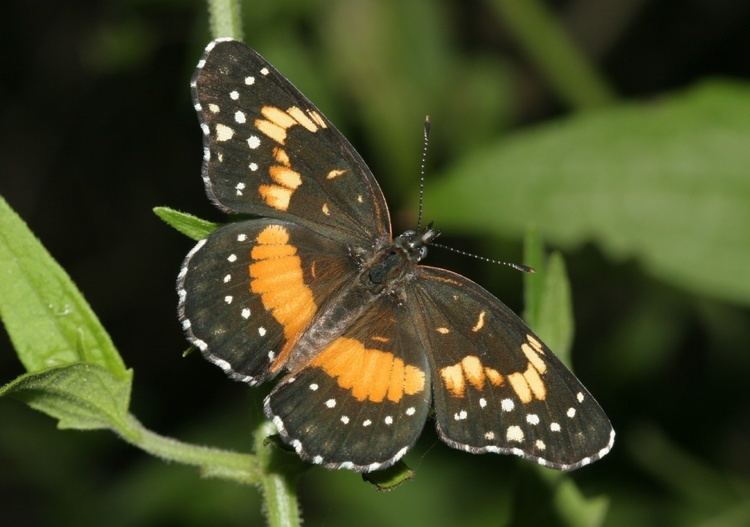
The crimson pstch is larger, the upper side of the fore wing has two spots in the cell, and the underside of the hind wing has a yellow basal patch with black spots in it.

The upper side of the Rosita patch's hind wing has a basal patch which is often two toned, and the underside of the hind wing is mostly pale yellow with a thick black marginal border.
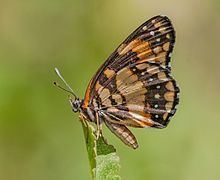
The red-spotted patch has a row of red marginal spots on the upper side, and underside of the hind wing.
Habitat
The bordered patch may be encountered in habitats such as desert hills, mesquite woodlands, pinyon woodlands, and oak woodlands. In North America, this species prefers to inhabit agricultural areas and weedy wastelands where the preferred host plant Helianthus annuus occurs.
Flight
This species is found from May to October in California, late January to mid-November in Arizona, and all year in southern Texas.
Life cycle
Males will find females by awaiting them on hilltops. Females will lay their eggs in clusters of about 100 or more on the underside of host plant leaves. The eggs are pale yellow-green but later turn a reddish color. The young larvae feed together and but do not make a nest. They will become solitary when older. The larva is as variable as the adult. It ranges from mostly orange with black spines and stripes to black with a red-orange middorsal stripe to almost all black. All variations have a red-orange head. The chrysalis varies from almost all white to white with black markings to nearly all black. The third instar larva hibernates and also estivates. The Bordered Patch has 3-4 broods per year.
Host plants
Here is a list of host plants used by the bordered patch:
